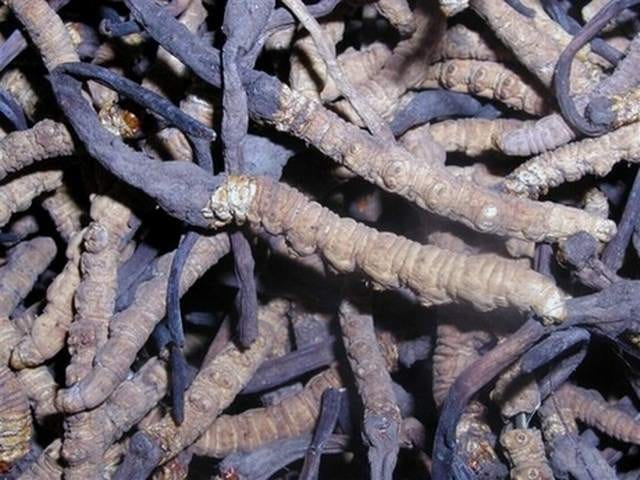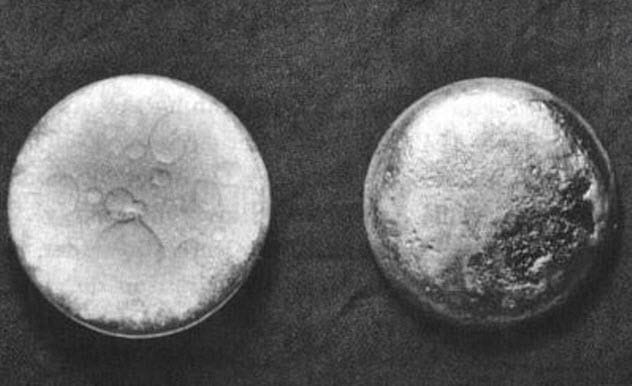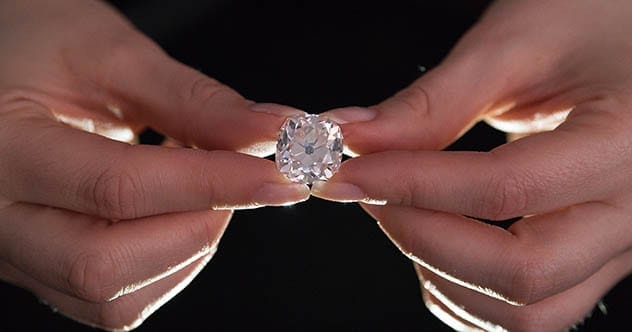Throughout history, gold has captivated humanity, serving as a symbol of wealth and power. From ancient civilizations to modern economies, its allure is undeniable. But, beyond its shimmer and shine, many substances on Earth possess a value that dwarfs that of gold. Prepare to be amazed as we explore ten things that are inherently more valuable than gold.
10. Caterpillar Fungus

Caterpillar fungus, a bizarre yet fascinating natural wonder, earns its name from its unique life cycle. This fungus sprouts from the soil, featuring a worm-like extension attached to what appears to be a caterpillar. Known in Tibet as "yartsa gunbu" (summer grass, winter worm), this fungus is a true marvel of nature.
The fungus infects a caterpillar, digesting it from the inside out. The remaining caterpillar portion is highly valued, especially in traditional medicine. The 15th-century Tibetan text, "An Ocean of Aphrodisiacal Qualities," highlights its potent properties.
While black truffles fetch around $1.76 per gram, caterpillar fungus soars to approximately $110 per gram, nearly doubling the value of gold.
9. Iridium
Iridium, a rare element in Earth’s crust, is primarily found in meteorites. Evidence of a massive impact 65 million years ago, linked to the extinction of dinosaurs, was discovered through an iridium layer in Earth’s strata.
Discovered in 1803, iridium is a silvery-white metal, exceptionally hard and brittle. As the second-densest metal, its rarity makes it valuable for various industrial applications.
Prized for its corrosion resistance, iridium is used as a hardening agent in platinum alloys. Its value surged in the early 2000s with the rise of flat-screen LED televisions, where it plays a crucial role.
Due to its scarcity and the challenges of mining, iridium trades at approximately $6,100 per ounce, or $215 per gram, about 3.75 times more valuable than gold.
8. Rhodium
Rhodium, often the most expensive metal globally, is a silvery-white metal within the platinum group, known for its corrosion resistance and chemical inertness. It commonly serves as a catalyst in car catalytic converters.
The automotive industry accounts for approximately 80% of global rhodium usage. Its anti-corrosion properties also make it ideal for coating white gold and sterling silver items.
Driven by the automotive industry’s demand and its rarity (one part per 200 million in Earth’s crust), rhodium’s price is high. Before the COVID-19 pandemic, it was around $950 per gram, but settled to about $550 per gram by mid-August 2021.
7. Snake Venom

While snake venom is often associated with danger, it has valuable medicinal applications. Deadly snake venom is crucial for creating antivenom and serves as a powerful pain reliever. It also helps break up blood clots and reduce blood pressure.
Harvesting snake venom is a challenging process, contributing to its high cost. The most valuable snake venoms come from the deadliest snakes. The King Cobra’s venom, known for its potent pain-relieving properties, costs around $153,000 per gallon, or $3,785 per gram.
Coral Snake venom, the second strongest, costs $4,000 per gram, making it nearly 11 times as valuable as gold.
6. Da Hong Pao Tea
Da Hong Pao tea, a rare Chinese tea, originates from the leaves of the Da Hong Pao tree. The production follows stringent traditional methods and is monitored by the Chinese government.
Only six mother Da Hong Pao trees remain, growing on a cliff in the Wuyi Mountains. Considered a national treasure, the leaves undergo seven steps: picking, withering, cooling, making, stir-frying, kneading, and baking.
This green/brown tea has an orchid aroma and a long-lasting aftertaste. Steepable up to nine times, Da Hong Pao tea is used to treat various illnesses by aiding blood circulation.
Due to its extreme rarity, Da Hong Pao tea costs around $1,400 per gram, with a pot costing about $10,000. A single gram is nearly 25 times more valuable than a gram of gold.
5. Plutonium

Plutonium, an incredibly radioactive metal, is rarely encountered outside specialized industries. Due to its toxicity, handling it is dangerous, as it accumulates in bones of anyone exposed. However, its unique properties make it valuable.
Plutonium-239 and 241 are fissile, sustaining nuclear chain reactions in nuclear weapons and reactors. Synthesized due to its scarcity, it can be found in trace amounts in natural uranium-238.
Despite its dangers, plutonium is essential in industries. It costs about $4,000 per gram, making it approximately 70 times more expensive than gold.
4. Red Diamonds
While clear diamonds are common, colored diamonds hold significant value. Red diamonds, the rarest gemstones on Earth, stand out.
Only around 30 red diamonds are known, and most are less than half a carat (0.1 gram). They can fetch up to $1 million per carat ($5 million per gram), depending on market conditions.
A 5.11-carat red diamond sold for $8 million in 2011. In contrast to gold, red diamonds are about 87,719 times more valuable.
3. Californium
Californium, a synthetic element discovered in 1950, is named after the University of California Radiation Laboratory where it was created. Its practical applications and limited production make it costly.
The most expensive chemical traded as a commodity, californium occurs naturally, but its most common isotope has a short half-life of 2.6 years. Primarily produced by labs in Russia and the U.S., it is used to start nuclear reactors and treat brain and cervical cancer.
Due to limited production, californium sells for about $27 million per gram, fluctuating based on the market. Its value makes it around 473,684 times more valuable than gold.
2. Francium
Francium, the last naturally discovered element, is incredibly rare. Only 20 to 30 grams exist in Earth’s crust at any time.
Found in trace amounts in thorium and uranium, francium has a half-life of 22 minutes, causing constant decay. Due to its instability, its only use is scientific research, making it valuable despite its lack of commercial applications.
Francium costs around $1 billion per gram, vanishing in less than an hour. A single gram is 17,543,859 times more valuable than gold.
1. Antimatter
Antimatter, known from science fiction, is composed of antiparticles. Created with particle accelerators, it annihilates when it contacts ordinary matter.
Stored in electric and magnetic fields, the longest antimatter has been stored is 405 days. It has practical and theoretical applications, including medical imaging and spacecraft propulsion.
Producing antimatter is expensive, with NASA estimating a single gram of antihydrogen at $62.5 trillion in 1999. Antimatter is approximately 1,096,491,228,070 times more valuable than gold, making it the most expensive substance known.
From caterpillar fungus to antimatter, the world is filled with substances far more valuable than gold. These materials captivate with their rarity, unique properties, and essential applications. As technology and science advance, who knows what other precious items will emerge, surpassing gold’s allure and value?
What did you think about this list? Let us know in the comments below!










